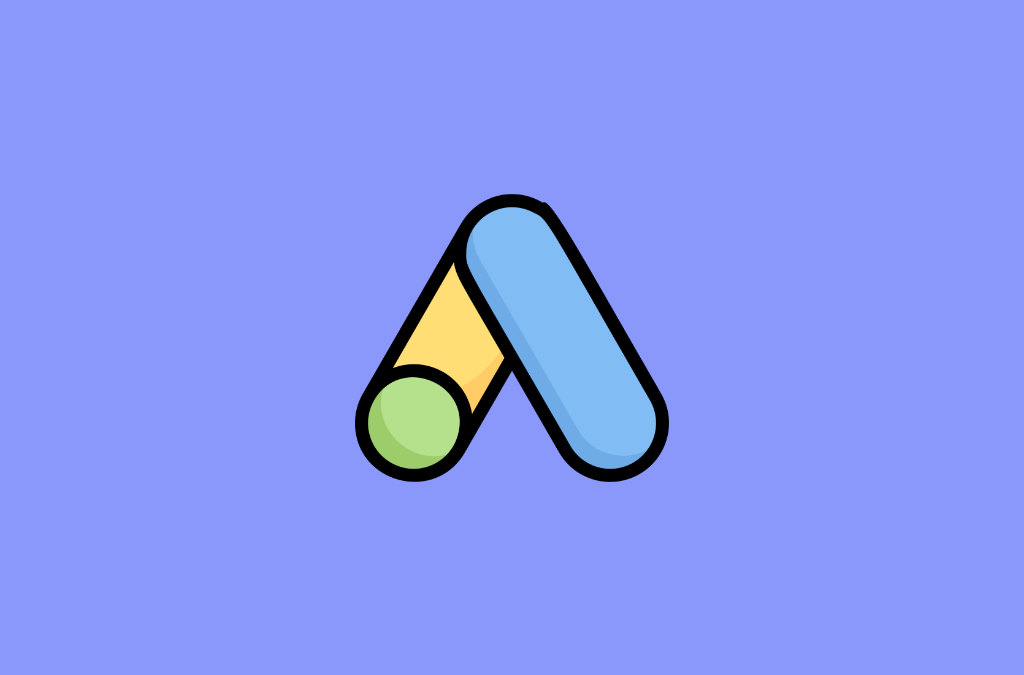
You’re a new Advertiser with Google Ads (formerly Google Adwords). Excitedly, you open your shiny new Google Ad account, Slap in a few relevant keywords, create your first Ad, decide how much you want to pay, and Bob’s your uncle.
At least Google makes it sound that simple, especially if you’re new to all that kind of stuff, but trust me it’s a little more complicated than that, and even if you don’t do it yourself, we think you savvy business owners need to know a little about pay per click, so you don’t end up pouring your hard-earned cash down the drain. We’ve seen it happen and it makes us sad.
What Is The Google Ads Auction?

Advertising on Google is a two-way street between the advertiser and the consumer. Google wants to create the best experience for both sides. With a bit of know-how and a sprinkle of magic, Google Ads makes this possible for everyone, with an auction-based bidding process. So without further ado, let’s get on with explaining how it all ticks.
How Do Google Ads Work?
Simply put, every time someone makes a Google search query, an invisible auction determines where your Ad will show in the SERPs (search engine results page) and how much your click will cost. Let’s dig a little deeper into the process.
For example, how do you know when your ad is going to show up? And where on the page will it show up? People going to see it? The Google ads auction comes into play.
How Does The Ad Auction Work?
The auction determines the cost-per-click and the ad position on the page. It uses a Factor called Ad-Rank.

Google want ads to be relevant to their users. Let’s face it, if you see an advertisement that’s utterly irrelevant to you, it’s just annoying, it’s spammy and you’ll probably start googling Adblockers. But when you see adverts that are tailored to your interests, smartly placed, quite often they will pique your interest.
A well-placed ad shouldn’t bother you at all, in fact, you’re probably happy to see it, because it brought something you could really use to your attention.
The better the experience for the user, the more likely they are to come back again and again, so Google makes sure the ad experience is as relevant as possible for the user. So just How does this auction work?
Google uses something called a second price auction. What does this mean? Basically, as an advertiser, you never have to pay your full bid. You only pay a penny more than the losing bid immediately below your own.
scratching your head? In Layman’s terms, it means if you paid £2 per click, and you get the all coveted top spot, but the advertiser in position 2 bids £1, the final price you pay is £1.01. This follows each advertiser down the cascade. It’s a highly successful system that stops unscrupulous price buying and gives everyone a fair shot.
How Does Ad Rank Determine Your Position?

So, I spoke about Ad Rank. Where you end up. Here’s how that works. Every ad that goes into the auction receives a score. That score determines not only your ad position but whether you are allowed to show at all.
Some ads don’t pass the quality test and subsequently don’t get shown on Google. The great thing is it’s not just based on money it’s based on quality too. The highest ad rank will be shown at position 1, the second-highest at position 2, and so on. Ad rank is based on 5 factors let’s Learn about them below.
Bid
This is you telling Google Ads the maximum amount you are willing to pay for each click. Be realistic here. You can put whatever figure you like, but if you bid too low, you wouldn’t show in the SERP at all. The good news whatever you bid on a search term, most of the time you end up paying less.
A recent account we worked on had an average CPC of around £2 for their main search terms, but with a well-structured account, we have lowered the average cost to 17pence. This means the client’s marketing budget goes way further and their adverts are placed in front of millions of potential customers.
Context Of Query
The context of a query is crucial to search ads. When Calculating ad rank, Google looks at the search term that the user types into their browser,, The location of the person doing the search, the device they are using, what time of day it is. Other user signals and attributes. This article from Search Engine Watch explains the context and search pretty well.
Ad Rank Threshold
Google has a minimum quality threshold for ads that will determine whether your ad show at all. Google Says
“The reserve price for your ad. If your bid is lower than the threshold, your ad won’t show. And if none of your competitors are eligible to show, the threshold (reserve price) is the price that you pay for the click.”
The Impact Of Ad Extensions
Ad Extensions literally ‘extend’ your advert with additional information. So there are more places your potential customers or users can click on your ad. There are a plethora of options and they are based on specific goals.
These clever extras give people more reasons to choose your business. They typically increase an ad’s click-through rate by several percentage points. And as I pointed out earlier a higher expected CTR improves the quality score.
if you are looking for users to buy your product and you have a physical store, then there are few extensions that are relevant to your advertising.
Location extensions – You can show a location, a call button, and a link to your contact and information page, which could include info about your opening times, map or directions, contact details, and even links to reviews, shipping info or returns policies.
or you can use Affiliate Location Extensions. This will show stockists. Which I think is really clever.
Callout Extensions – Nothing to do with the phone, its more of a ‘shout out’ – like “free delivery”, “24/7 support”, “10 Year Warranty” and so on. these extensions can encourage people to convert, as it can convey trust.
Sitelink extensions – Include links to important pages on your website. Google does this organically on the SERP (Search engine results page) but with sitelinks you can choose the pages on your site that you want to direct your users to.
Structured snippet extensions – This is a list of stuff like brands, colors, categories. it gives users a quick overview of the range of products or services you have available and again encourages people to click your ad.
Price extensions – You can display a price right there in the ad. that takes the work out of it for the user, and it can really help to lower bounce rate, as a user is less likely to click on your google ad if the price doesn’t work for them.
App extensions – This is to encourage users to download your app.
Telephone extensions – include your telephone number right inside the ad. Great for the kind of business that really needs a ‘call now’ option. think of a burst pipe or a pest problem.

How Ad Extensions Work
Why would you pay for half a page of advertising space and then leave half of it blank? Google Adwords Ad extensions don’t cost any extra to bolt on to your ads. I seriously don’t understand why people don’t bother using them.
We recommend using any and all ads extensions that are relevant to your campaigns, which will increase CTR and improve quality score. use all the tools in your tool kit!
When Do Ad Extensions Show?
Google will choose when to show your extension, There is no guarantee it’s going to appear all the time. however, the algorithm will work out if the extension is likely to improve your chances of conversion.
it also depends on the position of your ad on the search page, and if the Ad Rank is high enough. Google has a minimum ad rank, and if you don’t meet it, It’s sayonara extensions.
How Much Do Ad Extensions Cost?
I’ll say it again, They cost nothing to include! but they will cost your campaign dearly if you don’t use them. If a user clicks on your extension, you will be charged for a click, the same as if the user clicked on any other link. Clicks to seller ratings aren’t charged at all. Although they go directly to the rating site, a good review can bring the user back to you.
So ad extensions are a complete no brainer to us. higher quality score, better Ad rank, lower cost per click. It’s a winner and should be an essential part of any google ads campaign.
Auction Time And Quality
This is about how relevant the ad is going to be to your user. Quite often, we see ads with pages that don’t match the content of the ad. these ads typically will have a higher cost per click and a much lower quality score.
That is Ad rank, in a nutshell, what about quality score how is that determined? Here are the three main factors of quality score.
Ads Relevance
This is how well the ad matches what the user is searching for. It also makes sure that only useful and relevant ads are being shown. It stops unscrupulous advertisers paying their way to the top of a search engine by creating ads that are relevant to their services or products.
How To Improve The Relevance Of Your Google Ads
- Use negative keywords in your Google Ads account. A client of ours wanted to advertise office space. They had a Google Adwords account they had set up themselves targeting “office space”. But in the search terms report, we could see their clicks were being wasted because their Ads were appearing for terms like “post office address”. – adding the negative keyword “post” resolved this issue.
- Make sure your location targeting type only uses relevant languages and locations. By default the Google ad interface is set to show to any user who is “showing an interest” in your area, This means If I was looking up an article about a city I didn’t live in, I could then be shown local ads for that city, even though I don’t live there. Leaving this setting at default can cost you a lot of wasted clicks and subsequently money.
- Use Different creatives for different devices like mobile-specific ads.
- Make your Ads as granular as possible with unique ads for each keyword group. Some advertisers choose to create separate ad groups for each individual keyword. The more controlled you are with this, the higher the relevance of your ads will be, meaning a better quality score.
Landing Page Experience
You can have the best ad account in the world with perfectly crafted and well-written ads, appearing at the top of the search results. But if your landing page is rubbish then your users are just going to leave, and you have wasted all that money for nothing. you must consider content user experience as part of your online advertising campaign.
Take this travesty below. even looking at it makes me well up with anxiety.

One big factor of quality score is the landing page itself. A high-quality landing page will contain content that is relevant to the ad, and the intent of the ad. for example if you place an advertisement for high heeled shoes, but direct users to the homepage, then your users are likely to leave, but if you actually send them to a landing page where they can complete the transaction for high heeled shoes, then they have far more chance of converting by making that purchase.
How To Improve Landing Page Experience
- Send traffic to the right landing pages. Again if someone is typing a query for “red classic Adidas”, then the landing page should contain red classic Adidas and not an array of various footwear.
- Consistency is vital. The landing page needs to follow on from the Ads and include the same offer or call To Action. Users expect to find what they are looking for.
- Is your website fast to load? Page speed is so important, and one of Google’s primary ranking factors. If your website is low slow to load this will have an impact on your Google Ads quality score.
- Is your website mobile-friendly, and is it easy to navigate? Even if you do get a decent quality score, you will lose customers anyway if your site is none of the above.
- How clear is the information on your website? can users find what they are looking for? Does it Flow? Is it easy to understand?
- Are you transparent and trustworthy? Do you explain to users what you are doing with their data? If you sell products, do you have a returns policy can you include testimonials and reviews from your customers?
Expected Click-Through Rate
The ‘expected’ click-through rate of your Google Ads is a prediction, based on an average of how your ad is expected to perform based on the masses of data that Google acquires and stores from its billions of google search query every day.
These three things together determine the quality score of your Google Ads along with device location and time of day, and they happen in a split second between someone entering a search query into Google and clicking on your ad.
How Does Ad Rank Influence The Actual Cost Per Click?
The cost of Google Ads can vary on several factors, such as the context of each query. Average click is just an average the price you pay could be above or below that. The beautiful thing about Google Ads is the better your ad, the lower price you will pay.
How To Improve CTR
No one clicking on your Ads? Use these tips to improve your click-through rate.
- Try different calls to Action like free shipping or free returns or call now. Offers are a great way to get people to click on your Google Ads.
- Create time-specific ads are location-specific ads, for example, seasonal offers around different times of the year.
- Make your Google Ads as specific as possible match relevant keywords to your landing page. Include it in the headline and body so that the ad is directly relevant to the user’s search.
- Tout the benefits of your product or service. Try to be unique: this could be something like your no quibble return policy or outstanding customer service. Anything really that’s going to catch the eye of your users. A word of warning though, make sure you are honest. there’s really no point click baiting with Google Ads. Users expect to find what they are looking for when they use a search engine.
Can I improve My Ad Rank?
You can improve your Ad Rank by improving your quality score. To recap that is a combination of the quality of your Google Ads keywords and landing pages, The better your ad, the higher your quality score and the cheaper your clicks will be.
In the Google Ads interface, the quality score is nicely broken down into its various parts. quality score, landing page experience, ads relevancy and expected click-through rate. This is where it’s important to use ad extensions as the increased the chance that your ad will be clicked on, so they are going to naturally up your expected click-through rate.
Getting these things right is Key to a well-optimized Google ads account that will profit over and over.
How Much Does It Cost To Advertise On Google?
How much does Google Ads cost? This is understandably the first question most of our prospective clients ask when they don’t have a ton of experience with Google Ads. Most new advertisers are tentative and worried about how much they will have to spend and if they are going to be out of pocket.
How long is a piece of string is the frustrating answer to this question. But I always that reply with Advertising on Google shouldn’t ‘cost’ you anything. it should return over and over and make you money.
We have worked with hundreds of accounts in our agency and turned around accounts that don’t profit into nice money-making engines. but that takes expertise and continual optimization. You shouldn’t feel the cost, or the agency fee because it should be bringing in tonnes of business.
and if you need to know reasons to optimize your Google Ads account read our article.
But the cost of Google Ads is varied and depends on a number of variables.
Industry
Different industries have typically differing costs. for example the housing sector (mortgages) solicitors, accountancy, car leasing. These are pretty competitive sectors and the average cost per click could be as high as £70. This is typical because the lifetime value of a customer can be high yield. even in the digital sector, terms like ‘web design’ are high, That’s because web design can also be a high yield customer with a high lifetime value. You may pay $10 per click, and pay upwards of £100 to acquire a client.
Current Trends
Google Ads (formerly Google Adwords) runs on algorithms and is susceptible to the trends of what is happening in the world. a bit like the stock market. as the needs of consumers change, demand changes, and cost per clicks can change. One industry that saw a positive uplift during the current COVID-19 pandemic has been apparel.
Customer Lifecycle
Sometimes a prospective customer can take several interactions before they buy. the bigger ticket the item, the longer the consideration phase on the consumer path to purchase. You probably don’t shop around excessively for toilet roll, but if you are looking for a new appliance then it’s likely you will do your research.
Do Google Ads Really Work?
Well duh. Google is one of the richest companies on the planet. Their revenue comes from advertising. If their ads weren’t making billions of pounds per day for millions of advertisers, then they would have been out of business a long long time ago.
On top of this, we wouldn’t be making a living as a PPC agency if it didn’t work. But I would be remiss if I didn’t say more accounts don’t work than do, and people end up losing a lot of money and going away with a bad taste in their mouth.
Work with an agency that knows how to build, maintain, and optimize a Google Ads account. A Google partner like us, will also have access to the latest beta products from Google Ads, and support directly from Google on some accounts.
As Google Partners, we have to sit seven exams per year, responsibly handle a minimum spend for each specialism, and keep to a high-quality level which is determined by a score in our Google Partner account.
Are Google Ads Worth The Money?
So is Google AdWords worth the money in 2020? Does it deserve your hard-earned spondoolies? We believe Google Ads, done right is absolutely worth the money.
A high-quality account allows businesses to get their brand in front of millions of people at a fraction of the price of conventional non-digital advertising. The control over your bids is highly granular and you can stop and start at any ti









